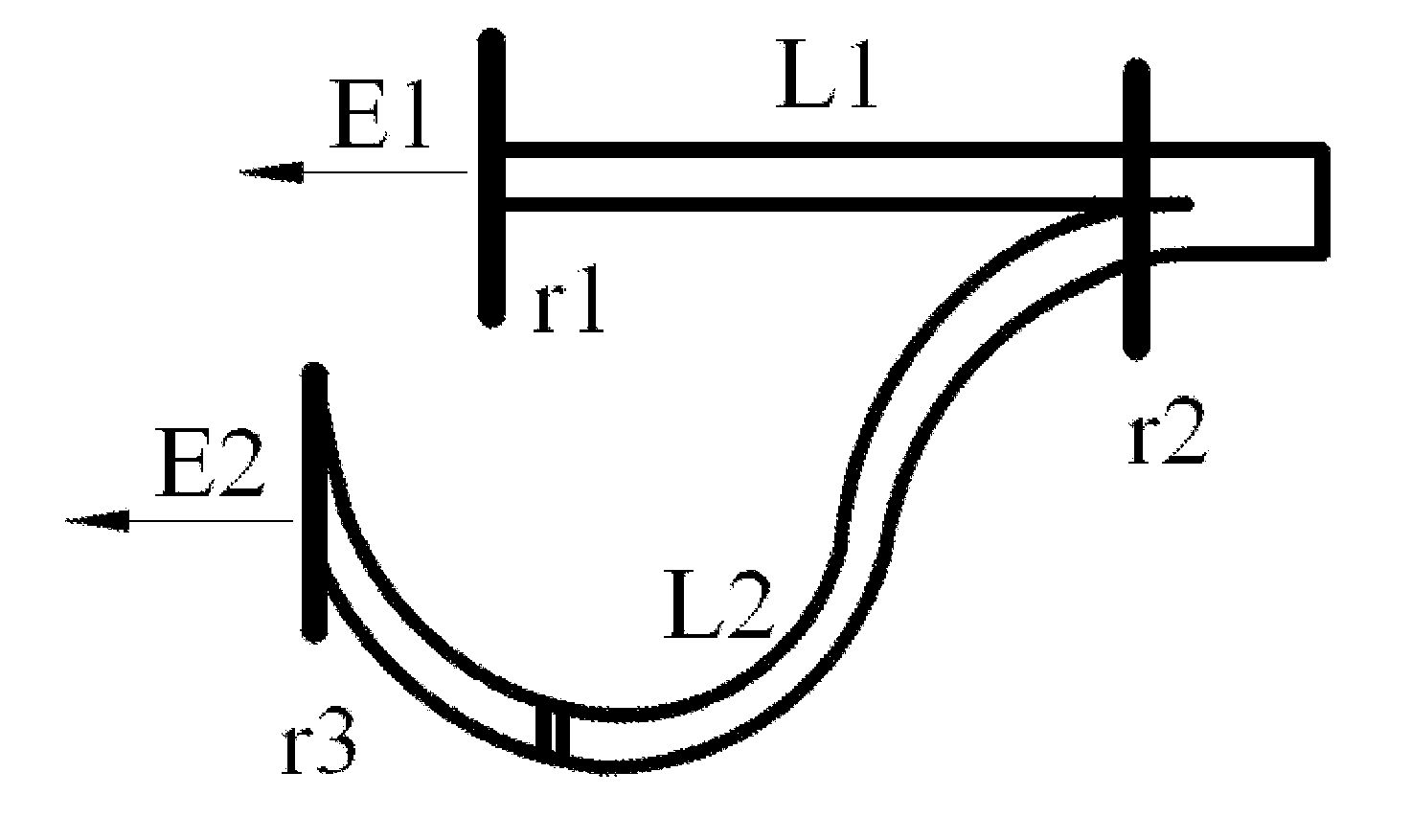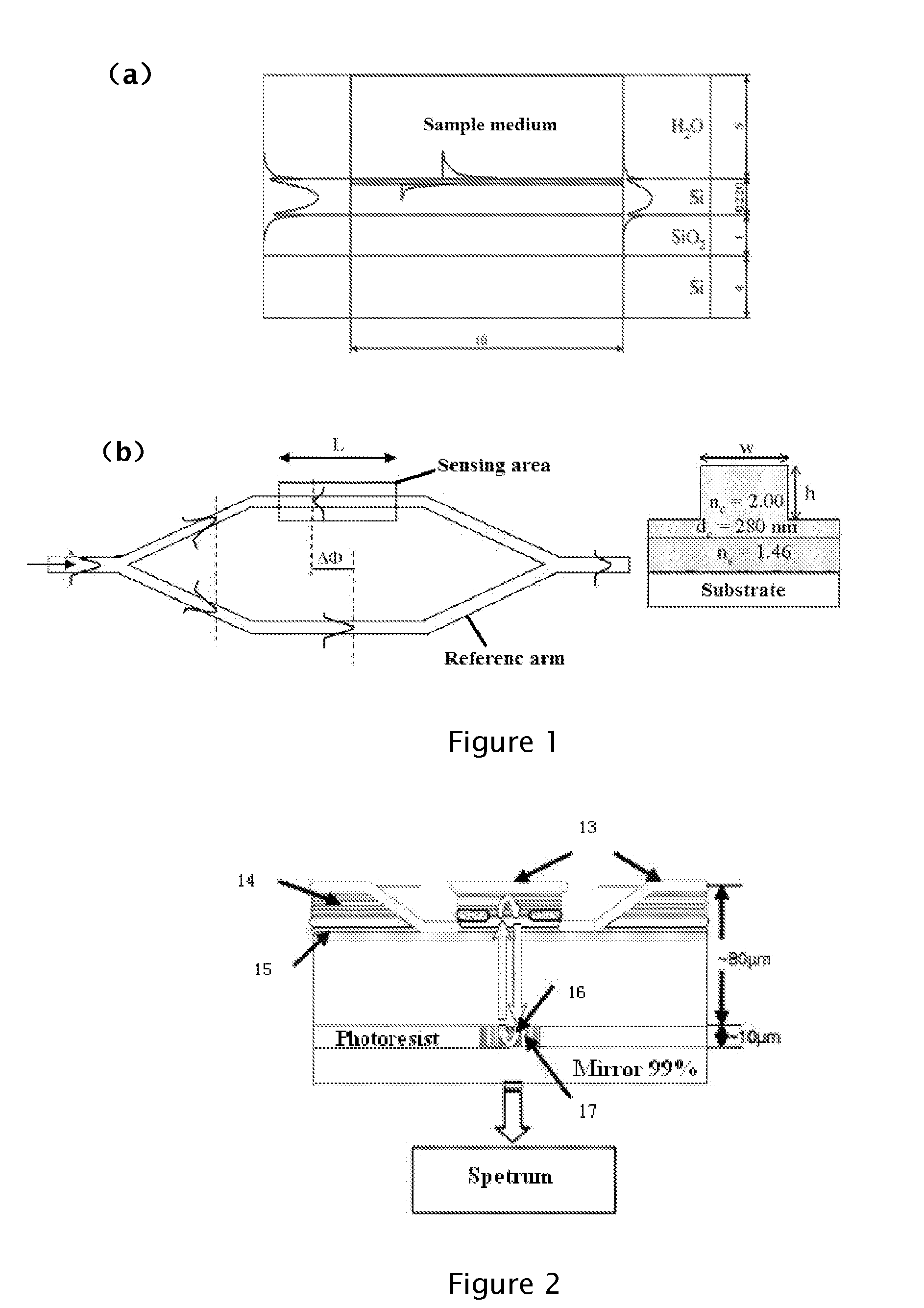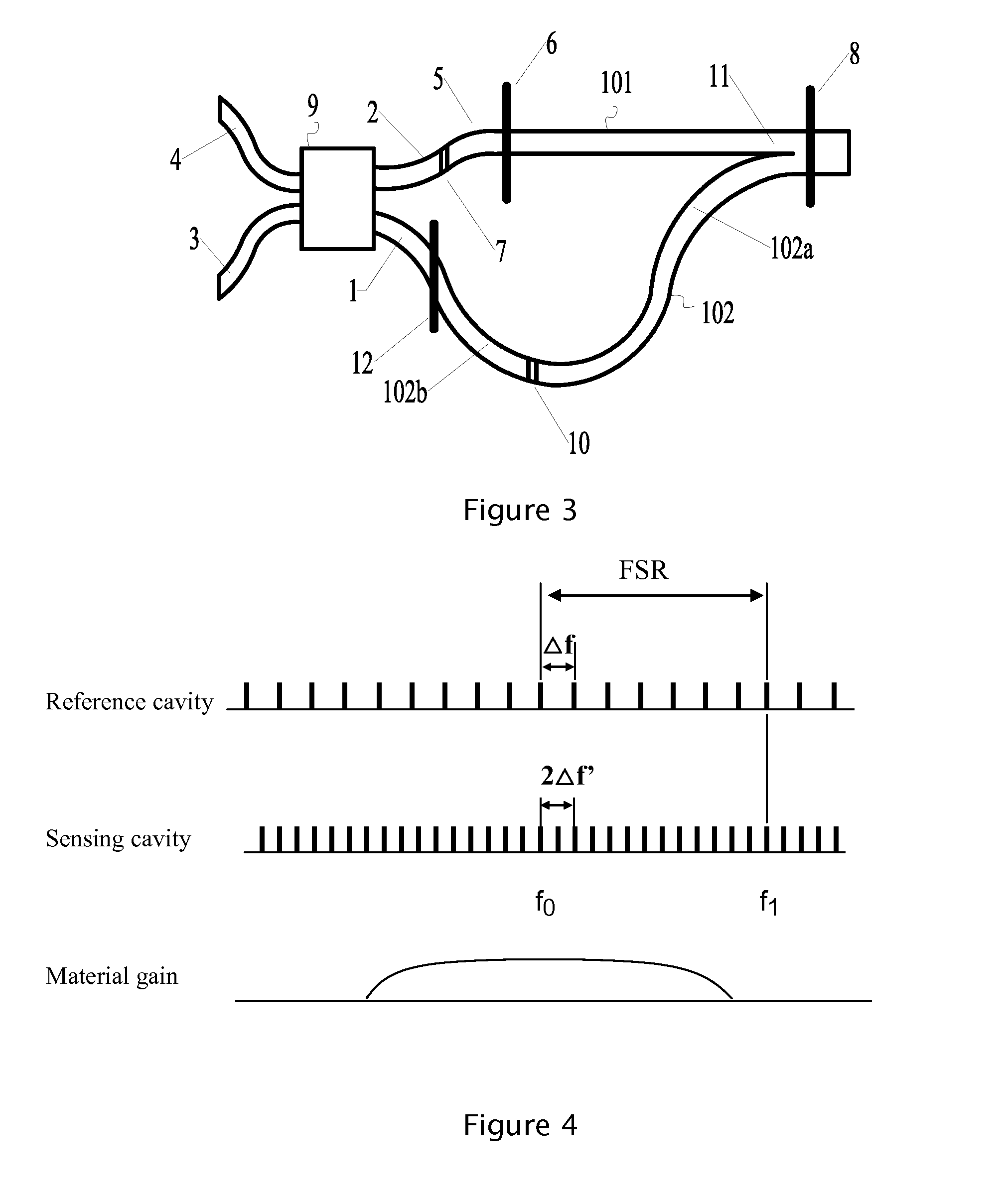Semiconductor laser based intra-cavity optical micro-fluidic biosensor
a microfluidic biosensor and micro-fluidic technology, applied in the field of biosensors, can solve the problems of increasing operation difficulty and cost, increasing the contribution of ground mode to interfere constructively or destructively, and increasing the operation difficulty, so as to simplify the whole biosensor system, high performance, and versatile function
- Summary
- Abstract
- Description
- Claims
- Application Information
AI Technical Summary
Benefits of technology
Problems solved by technology
Method used
Image
Examples
Embodiment Construction
[0042]FIG. 3 is the first implementation of the present invention. The semiconductor laser based intra-cavity optical micro-fluidic biosensor comprises a reference cavity 101, a sensing cavity 102, a 2×2 coupler 9 and a phase adjustment section 5 on either input port of the 2×2 coupler. Two optical waveguide arms are placed in the reference cavity 101 and the sensing cavity 102, respectively. The two optical waveguides are very close to each other on one end (the close end), but are far away from each other on the other end (the open end). Each optical waveguide has partially reflecting mirrors on both ends, which can be a cleaved facet or rectangular deep etched trench, as indicated by elements 6, 8, 12 in FIG. 3. Each optical waveguide and the partially reflecting mirrors on both ends constitute a Fabry-Perot cavity. At least one portion of each of the waveguides in the reference cavity 101 and in the sensing cavity 102 has an electrode for injecting current to provide optical gai...
PUM
 Login to View More
Login to View More Abstract
Description
Claims
Application Information
 Login to View More
Login to View More - R&D
- Intellectual Property
- Life Sciences
- Materials
- Tech Scout
- Unparalleled Data Quality
- Higher Quality Content
- 60% Fewer Hallucinations
Browse by: Latest US Patents, China's latest patents, Technical Efficacy Thesaurus, Application Domain, Technology Topic, Popular Technical Reports.
© 2025 PatSnap. All rights reserved.Legal|Privacy policy|Modern Slavery Act Transparency Statement|Sitemap|About US| Contact US: help@patsnap.com



